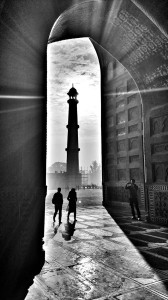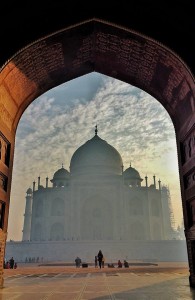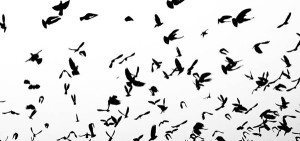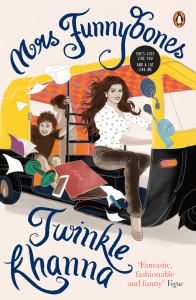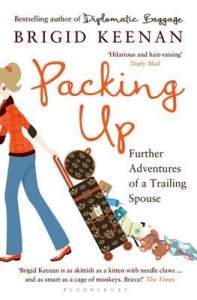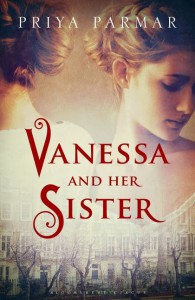 ( I interviewed some members of the DECA collective. Founder-member, Sonia Faleiro facilitated the conversation via email. This was uploaded on the Hindu website on 11 April 2015 at: http://www.thehindu.com/features/magazine/a-fistful-of-journalism/article7088990.ece and a shorter version of it in print on 12 April 2015. I am also c&p the text below.)
( I interviewed some members of the DECA collective. Founder-member, Sonia Faleiro facilitated the conversation via email. This was uploaded on the Hindu website on 11 April 2015 at: http://www.thehindu.com/features/magazine/a-fistful-of-journalism/article7088990.ece and a shorter version of it in print on 12 April 2015. I am also c&p the text below.)
The members of Deca, a global journalism cooperative, share the reason for sharing it, and the future of web publishing.
Deca is a global journalism cooperative that creates long-form stories about the world to read on mobile devices ( www.decastories.com and @decastories). It takes its cue from Magnum Photos, a member-owned cooperative that changed the rules of photojournalism in the 1950s. Magnum’s founders, including Robert Capa and Henri Cartier-Bresson, took advantage of the technological shifts of the time — portable 35mm cameras and fast, cheap film processing —to strike out on their own, covering the stories they felt were most important. With journalism entering an era of dramatic change with tablets and smartphones replacing print books and newspapers, established journalists can now bring their stories directly to readers. These shifts — and agencies like Magnum — are Deca’s inspiration.
Deca’s members have authored acclaimed books and articles in magazines like Harper’s, The Atlantic,The New Yorker, Time, Science, Rolling Stone, GQ, National Geographic, Outside, Bloomberg Businessweek, and The New York Times Magazine. The members — who are based in Rome, London, Shanghai, Barcelona, Los Angeles, New York, Detroit, Seattle, Washington DC, UAE, Lebanon, and South Africa — include winners and finalists of prestigious awards like Pulitzer Prize, National Magazine Award, PEN Literary Award, Livingston Award, Whiting Writers’ Award, and Los Angeles Book Prize. Since Deca’s launch in mid-2014, five stories have been published. Sonia Faleiro’s 13 Men was No. 1 on Amazon India and was selected as a ‘Kindle Select 25’ (one of 25 best books in the Amazon Kindle storefront across all markets).
Once a month, Deca publishes a non-fiction story about the world, somewhere between a long article and a short book. Each piece is written by one member, edited by another, and approved by the rest. The eight founding members are Sonia Faleiro, Stephan Faris, McKenzie Funk, Vanessa M. Gezari, Marc Herman, Mara Hvistendahl, Delphine Schrank, and Tom Zoellner. Recently, Elizabeth Dickinson, Rania Abouzeid, and Richard Poplak became members too. In a freewheeling interview, Deca’s members talk about why they started Deca and the future of publishing on the web. Excerpts:
What prompted the creation of Deca?
Our inspiration — and proposed response to any coming changes — are one and the same. New technologies may be gutting the market for print journalism but they have a silver-ish lining: If journalists want to write directly for their readers, it’s now cheap and easy to pull off. No longer do the two sides need a magazine in order to find one another. Note that we also found inspiration in newer photo cooperatives like Noor and VII, which came about after a more recent sea change in photography: digital cameras. We wanted to tell the important stories of our times, to do so in detail, and for as wide a readership as possible. But we also wanted to maintain the standards we’ve become used to working for great traditional media. We wanted to be sure we’d be well edited, copy edited, and beautifully published. Deca does all of this along with providing us the support and security of working with a group of similarly idealistic but also very hard-working people.
Once you publish the long-form stories, what next?
Photo cooperatives have long functioned as a way to keep archival photos by its members from disappearing in the dust bin. It’s likewise possible that Deca could package and put out anthologies of its members’ work — stories sitting in our individual archives that are newly relevant today.
What are the rules that you foresee changing of making content available on smartphones?
A shocking proportion of people now read their news and books on their smartphones. It helps that screens keep on getting bigger, which is true of Amazon’s phone as well as the new iPhone, apparently. Stories can now live independently of their publications.
How will crowdsourcing work for this collective?
Kickstarter’s been a smashing success so far. But it will go on in some fashion via our website and a campaign on the new crowdsourcing platform Tugboat. Many publications are now using a slow-drip version of the NPR model: “If you like us, please support us.”
How will the collective work add new authors?
New authors will be added subject to a unanimous vote. We’re obviously looking to work with great writers. But we are a co-op so we also want to be sure that whoever we bring on board understands that this is about shared effort, responsibility, wins and losses. They must also be pretty easy to work with.
What is the selection process?
We publish only members’ work and have no plans to do otherwise. We do have plans to eventually translate members’ stories to other languages, however.
Will you develop this into a subscription model or will it remain as an offering of digital singles on KDP?
Yes. Subscribers are signing up now via Kickstarter. Our app is up and running and so is our subscription service. So basically we now sell singles on Amazon. We sell singles and subs through our app that people can download to their smartphones or digital devices. Readers can subscribe to Deca for $14.99, which buys them 10 stories (http://www.decastories.com/store/subscribe/). Readers can also buy singles from our website to read online (http://www.decastories.com/13men/)
Why did you opt for a Digital Restrictions Management (DRM model) when models such as Creative Commons are becoming popular?
Perhaps mainly because we’re a bunch of writers, not techies or business people, and funding our work via the DRM is the model we could most easily wrap our heads around. Creative Commons is great, but we’ve yet to understand how, if readers don’t pay, we can’t fund reporting trips, let alone pay ourselves. So we’ve started with a pay-to-read model and are crossing our fingers. The money for research has to come from somewhere. Readers supporting journalists directly — outside the framework of a magazine or a large media organisation — is also a trend. Even so, our subscription for a full year costs about the same as a single night out at the movies, and directly expresses your support for the continued existence of this kind of journalism.
Will you ever consider anthologising these e-singles in print? (Guernica announced in summer of 2014 it will be publishing an annual print-anthology.)
Absolutely considering. We’re still fond of print, even if we’re enabled by digital. And there may already be cases when you see Deca’s work in print: When new Deca stories come out, we aim to partner with magazines and publish excerpts therein. In fact, Of Ice and Men was on the cover of The New York Times Magazine. They published a whopping 9k word excerpt.
12 April 2015
 in geographical corners that are mostly hidden from media view. He discusses robotics, genomics, cyber security, digital technology and finance, blockchains and bitcoins, etc. This is the kind of book that will be a reference document now to understand innovations and will have a long shelflife for its historical value in contextualising and explaining innovations that will define twenty-first century. What comes across strongly is that Alex Ross does not view innovations as disruptive but with wide-eyed wonder at the business potential and positive socio-economic impact these measures will have in future. Today it may seem as if these innovations are nudging just the limits of that is plausible yet many of these practices/ predictions are slowly coming true in one’s lifetime. Much like the automatic sliding doors of Gene Roddenberry’s stories of the 1960s were considered to be innovative are now very common in modern life.
in geographical corners that are mostly hidden from media view. He discusses robotics, genomics, cyber security, digital technology and finance, blockchains and bitcoins, etc. This is the kind of book that will be a reference document now to understand innovations and will have a long shelflife for its historical value in contextualising and explaining innovations that will define twenty-first century. What comes across strongly is that Alex Ross does not view innovations as disruptive but with wide-eyed wonder at the business potential and positive socio-economic impact these measures will have in future. Today it may seem as if these innovations are nudging just the limits of that is plausible yet many of these practices/ predictions are slowly coming true in one’s lifetime. Much like the automatic sliding doors of Gene Roddenberry’s stories of the 1960s were considered to be innovative are now very common in modern life.

